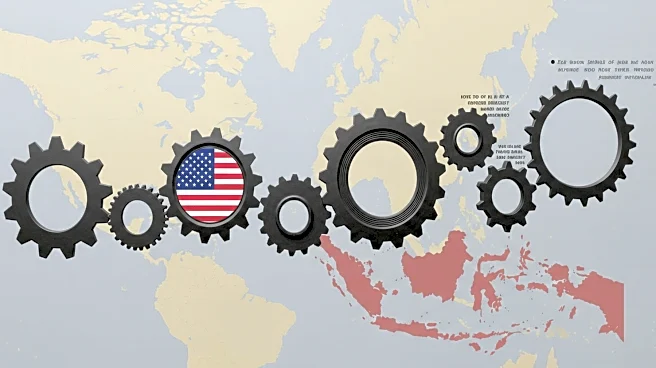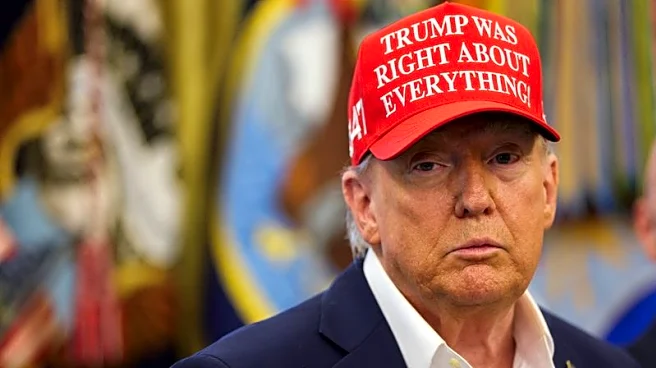What is the story about?
What's Happening?
President Trump's imposition of tariffs on Southeast Asian goods has significantly altered the region's trade landscape. The tariffs, part of a broader strategy to address trade imbalances and security concerns, have led to increased import taxes on goods from countries like Vietnam, Cambodia, and Indonesia. These nations, traditionally reliant on export-led growth, are now facing challenges as they navigate the new trade environment. The tariffs have prompted shifts in supply chains, with some companies diversifying their production locations to mitigate the impact. Despite these challenges, Southeast Asian countries are working to strengthen their domestic markets and explore new trade partnerships, including regional agreements like the Regional Comprehensive Economic Partnership (RCEP).
Why It's Important?
The tariffs imposed by President Trump have far-reaching implications for both Southeast Asia and the United States. For Southeast Asian countries, the tariffs threaten key industries such as garments, footwear, and electronics, which are heavily dependent on the U.S. market. This could lead to significant economic disruptions, including potential job losses. For the U.S., the tariffs are part of a strategy to reduce trade deficits and exert influence over global trade dynamics. However, they also risk pushing Southeast Asian countries closer to China, as they seek alternative markets and investment partners. This shift could alter geopolitical alliances and economic dependencies in the region.
What's Next?
Southeast Asian countries are likely to continue diversifying their trade relationships to reduce reliance on the U.S. market. This includes strengthening regional trade agreements and exploring new markets in Europe and Latin America. Additionally, these countries may focus on enhancing their domestic industries to build resilience against external trade shocks. The U.S., on the other hand, may face pressure to reassess its tariff strategy, especially if it leads to unintended economic consequences or geopolitical shifts. Ongoing negotiations and diplomatic efforts will be crucial in shaping the future of U.S.-Southeast Asia trade relations.
Beyond the Headlines
The tariffs highlight broader issues in global trade, including the balance between protectionism and free trade. They also underscore the importance of multilateral trade agreements and the role of organizations like the World Trade Organization (WTO) in mediating trade disputes. As countries navigate these challenges, there may be increased emphasis on sustainable and equitable trade practices, particularly in light of environmental and social considerations.
AI Generated Content
Do you find this article useful?












